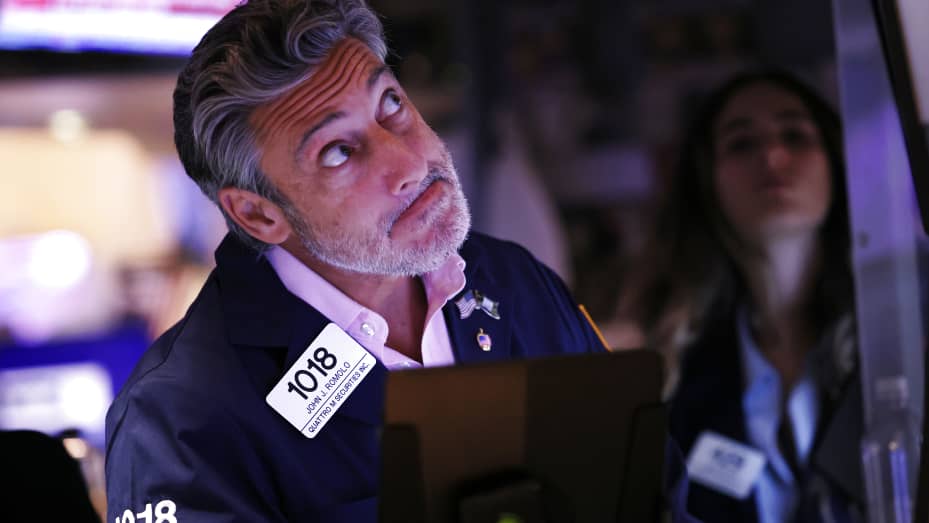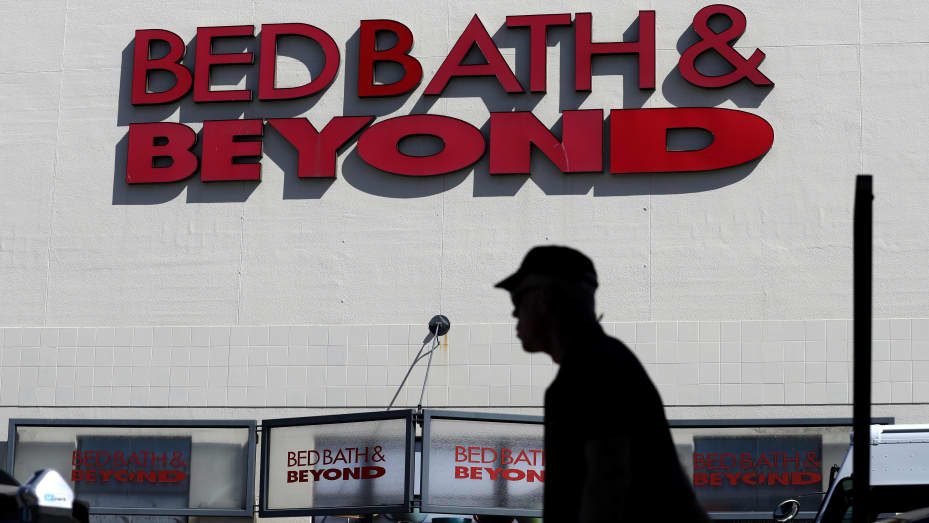



Wall Street was headed toward another down week with U.S. stock futures lower Friday. Traders were absorbing an ugly earnings warning from FedEx, which reported weakening global shipment volumes for its latest quarter and withdrew its full-year guidance. Earlier in the week, U.S. equities had their worst day since 2020 after August’s consumer price index report showed headline inflation edged up 0.1% on a monthly basis, despite a drop in gas prices. That indicated an increasingly difficult pathway for the Federal Reserve to bring down inflation. Traders will get consumer sentiment data at 10 a.m. ET Friday, but the three major averages were on pace to notch their fourth losing week in five.

Shares of FedEx plunged late Thursday after the company said it is aggressively cutting costs after weakening global shipping volumes dragged down results for the latest quarter. FedEx said it had anticipated demand to increase as factories in China opened back up with the easing of Covid pandemicrestrictions. Instead, it said demand worldwide fell. CEO Raj Subramaniam said in an interview with CNBC’s Jim Cramer on “Mad Money” that the loss in volume was wide-reaching, and that the company has seen weekly declines since its investor day in June. He said that was an indication of poor economic conditions. “We are a reflection of everybody else’s business, especially the high-value economy in the world,” Subramaniam said.

The White House has released a long-awaited framework on what cryptocurrency regulation in the U.S. should look like. The direction from Washington includes how the financial services industry should evolve to make borderless transactions easier and how to crack down on fraud in the digital asset space. The framework follows an executive order issued in March, in which President Joe Biden called on federal agencies to examine the risks and benefits of cryptocurrencies and issue official reports on their findings. One section of the White House’s new framework on crypto regulation focuses on eliminating illegal activity in the industry — and the measures proposed appear to have real teeth.

When Bed Bath & Beyond announced last month that it would close roughly 150 of its “lower producing” namesake stores, many people wondered if the location near them would be among those shuttered. Now the struggling home goods retailer has started identifying the stores marked for closure, with a list of 56 locations scattered around the U.S. The closures are part of a broader plan to try to stabilize the company’s finances and turn around its declining sales. In late August, Bed Bath said that it secured more than $500 million in new financing ahead of the key holiday season and that it was trimming its workforce, in addition to the store closures. To see which stores it’s shuttering, check out the map by CNBC’s Gabriel Cortes.

Kanye West, who goes by Ye, is ending the contract between his company, Yeezy, and Gap Inc. The partnership made headlines when it was announced in 2020, and the first product in the Yeezy Gap line − a bright blue puffer jacket − sold out within hours of its release a year later. But then in a letter sent by his lawyers Thursday, Yeezy told Gap that the retailer failed to meet its contract obligations, including the opening of dedicated Yeezy Gap stores. Gap CEO Mark Breitbard confirmed the break in a memo to employees later in the day, saying that the two parties shared a vision for Yeezy Gap, but that how they work to deliver the vision “is not aligned.” In an interview on CNBC’s “Closing Bell,” the rapper and designer put it another way, “A king can’t live in someone else’s castle.”
— CNBC’s Sarah Min, Jack Stebbins, MacKenzie Sigalos, Melissa Repko and Gabriel Cortes contributed to this re
